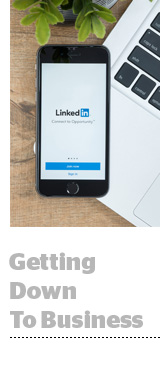
The B2B martech space is heating up as titans spend billions to build their stacks – and now it’s makeover time at LinkedIn.
On Monday, LinkedIn opened the public beta for a revamped version of Campaign Manager, the self-service tool advertisers use to manage and measure campaigns on its platform.
The idea is “to make it easier for our customers to understand what’s happening when they run campaigns with us,” said Nitin Julka, the group product manager at LinkedIn in charge of the project.
The primary difference between the previous version and the new is a move toward objective-based advertising. Rather than prompting advertisers to choose the ad format or LinkedIn ad product they want to use to power a campaign, they’ll be able to craft their campaigns based on the desired outcome.
An advertiser looking to generate awareness will be given different recommendations for how to proceed than, say, an advertiser looking for a direct response on the brain.
“All of the advertisers we talk to are trying to maximize ROI and performance,”Julka said. “One of the best ways to accomplish that is by helping advertisers maximize their goals.”
To match the new focus on outcomes, LinkedIn will also start charging advertisers based on their KPIs, as opposed to at a fixed rate. Starting in mid-2019, LinkedIn will let advertisers select the user actions they want to pay for.
The updated platform also includes cosmetic changes and layout tweaks designed to make it easier to use, including consolidated screens for targeting, budgeting and real-time information forecasting, plus live previews for ad creation.
“We’re investing so much in this overhaul it should be clear how bullish we are on the opportunity in B2B,” Julka said.
B2B advertisers in the US will spend around $4.6 billion on digital advertising alone in 2018, up 13% from last year, according to eMarketer.
But not every initiative to capitalize on that growing opportunity has panned out for LinkedIn.
It’s been two years since LinkedIn threw in the towel on Lead Accelerator, the B2B lead-nurturing tool it acquired through its 2014 acquisition of Bizo. LinkedIn took a $50 million write-down on Bizo in 2016 after it became clear that scaling a unified B2B ad platform was going to take more resources than LinkedIn was ready to allocate.
LinkedIn, which now uses AppNexus to manage all of its programmatic inventory, wants to improve the effectiveness and usability of its ad products, particularly sponsored content within its ecosystem.
“This is just the beginning, what we see as the foundation for more innovation in the future,” Julka said. “I see this as a positive signal for the B2B market overall.”
This post was syndicated from Ad Exchanger.


More Stories
The Tuesday Club hosts Women’s Work’s In(visible) exhibition in Tāmaki Makaurau
Under Armour Taps Estée Lauder Exec to Lead AI and Analytics
Lani Jamieson joins D3 to shape the next chapter of its growth